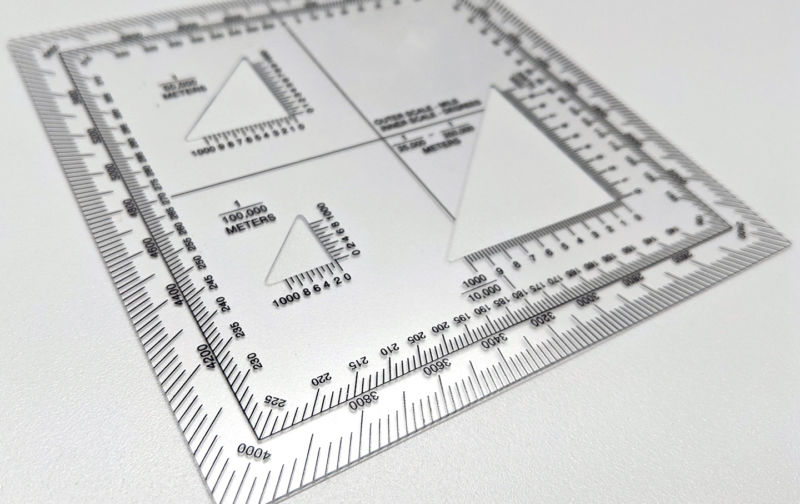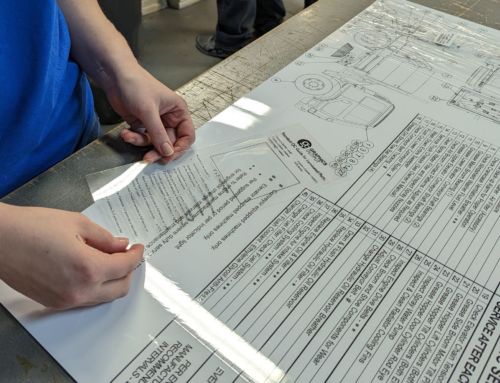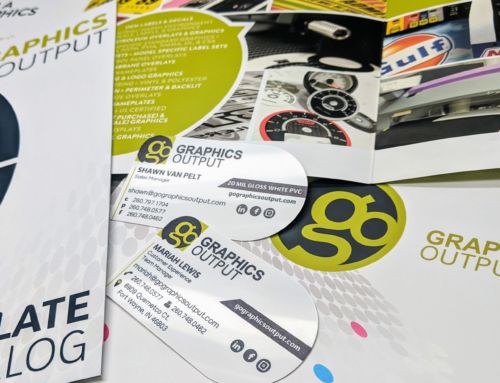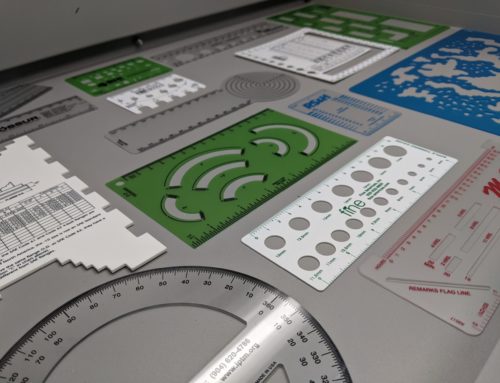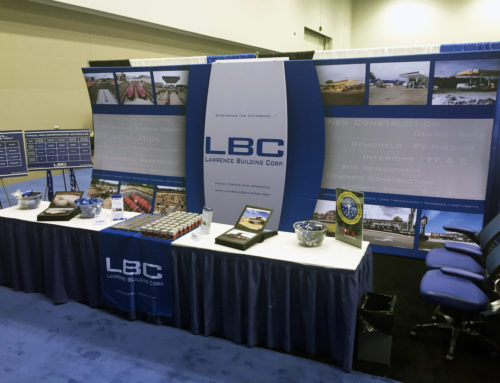Industry article after industry article says hand-drafting is dead, that revolutionary computer-aided design has made hand-sketching irrelevant. Technology’s flexibility, variety, and speed make it the easy choice for most drafting projects.
Travis Horton, architectural engineering professor at Purdue University, used to use templates and stencils all the time. The ease of using his iPad, however, means it’s been years since he turned to hand-drafting tools. His experience is typical, but there are certain situations when hand-drafting is the way to go. Digital drafting might be revolutionary, but that doesn’t mean manual drafting has become irrelevant.
Case in point: Graphics Output sells thousands of custom precision templates each month. So we asked the experts to learn, When is the right time to use a drafting template?

A variety of templates are found across different industries, including engineering, architecture, and interior design.
Learning to draft by hand first can be helpful
Experts agree that starting with hand sketching can be beneficial in the early stages of drafting education. It teaches about scales and units of measurement hands-on, more effectively than computer drafting. Learning these basics enforces good drawing habits that will be helpful later in the design process, says Barbara Young, interior design assistant professor at Purdue University in Indiana, where students use drafting templates in foundation courses.
Plus, physically sketching versus using technology prompts different kinds of thinking, says Ruth Streveler, engineering education professor at Purdue.
Technology isn’t always available
Sometimes, due to lack of resources or technology, computer-aided drafting isn’t possible. Consider tactical mapping, which uses scaled tools to used draw on maps and navigate in the wilderness when technology fails. While it’s not drafting in the technical sense of the word, the basic principles of hand-drafting still apply.
Square military mapping protractors are used in land navigation and plotting without the use of GPS.
For a traditional drafting example, those in the Amish community are not permitted to use technology. Scaled rulers and specialized cutouts are invaluable to Amish employees in architecture, construction, and design.
Hand-drawing is also useful in law enforcement, where officers need to make manual, scaled drawings on the scene or in patrol vehicles, say Dick and Jan Walton, owners of the Arizona-based Bear-Aide, Inc., which specializes in police and traffic templates. Plus, small police departments often can’t afford the computers and software necessary to draw diagrams of incidents.
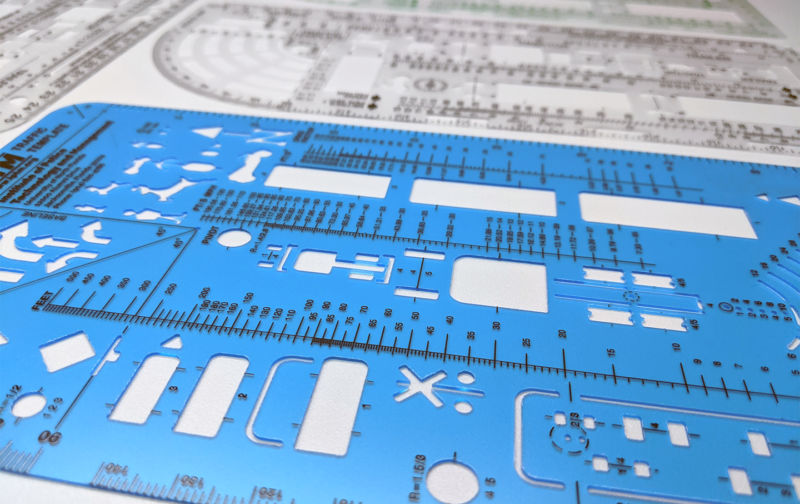
A photo of accident reconstruction templates, which are used by officers to sketch traffic accidents at a scene.
Informal, collaborative design is sometimes easier on paper
In informal stages of design work, collaborating with a team may be considerably easier with physical drafting, according to Bryan D. Orthel, associate professor and interior design area coordinator at Indiana University. Collaboration using currently available software has limits, although technology continues to push them. For now, it’s often easier for a group to sketch out ideas on paper during a brainstorming session. Using a template tool in the moment can both save time and produce a more polished drawing. Once the project gets nailed down, someone can recreate a sketch digitally.
Templates are novelty items
Graphics Output produces custom plastic templates, which sometimes require a custom cut for an extremely specific use. The templates almost always feature a logo and contact information, which can make them a fun and useful handout.
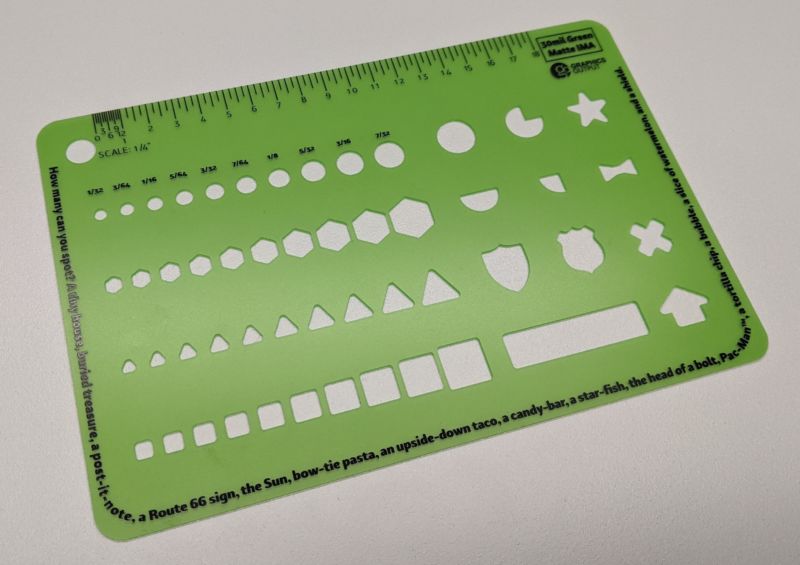
Promotional templates can be routed into a variety of shapes, and customized with a logo and contact info.
“Those of us in older generations hold on to templates for nostalgia’s sake,” says Young, the Purdue interior design professor, and capitalizing on that nostalgia can work in a company’s favor.
Promotional reasons—and educational ones—are why customers still purchase templates today, says Debbie Hildenbrand, a template industry veteran at The Phoenix Group, which makes custom plastic templates in Texas. She was originally hired to increase promotional template sales when computers began taking away the traditional use of drafting templates.
Because drafting templates are becoming less relevant, they also are scarce, with people more likely to hang on to them “just in case.” Many companies have begun capitalizing on their novelty and perceived use to increase brand awareness.
Purchasing custom templates
Although most people draft using computers and tablets, rightfully so, there are a few key times and places where manual drafting and its tools are preferred—or even needed. If you’d like to learn more about getting your own custom precision templates, Graphics Output is happy to help. Shoot us an email or give us a call at 260-748-0577.

